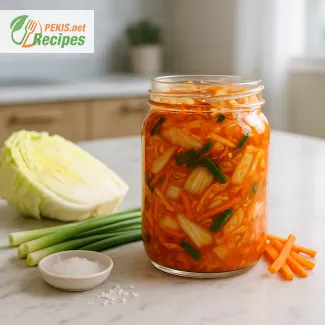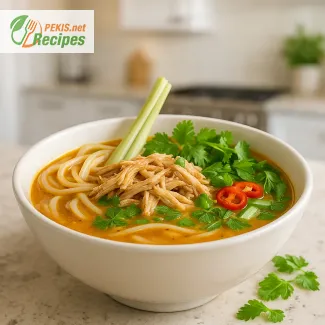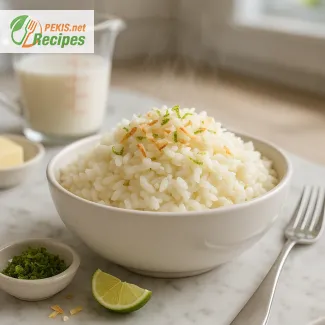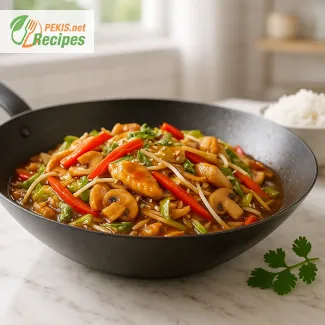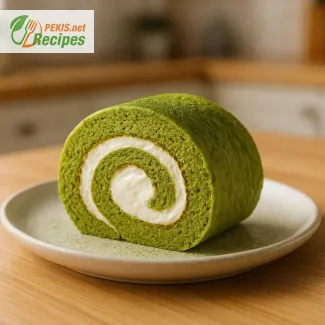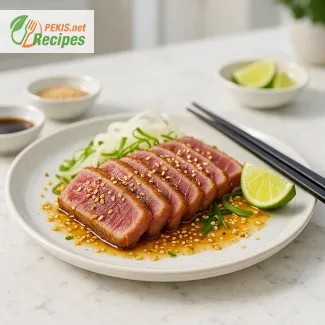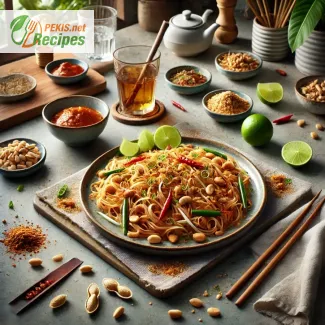
Pad Thai, one of the most celebrated dishes in Thai cuisine, owes its signature sweet and tangy flavor to a harmonious balance of meticulously selected ingredients. This beloved dish, enjoyed in bustling street markets and fine dining establishments alike, perfectly encapsulates the culinary artistry of Thailand. The main ingredient responsible for its distinctive taste is none other than tamarind paste, a transformative component that elevates Pad Thai into a dish of unparalleled flavor complexity.
What Makes Tamarind the Star of Pad Thai?
Tamarind paste, derived from the tamarind fruit, is the secret behind Pad Thai’s rich, multi-dimensional flavor profile. Its unique taste blends natural sweetness, subtle sourness, and a touch of earthiness, creating a robust foundation that balances the dish's other components. The tangy notes from tamarind complement the umami-rich fish sauce, the nuttiness of roasted peanuts, and the sweetness of palm sugar, achieving a harmony that makes every bite of Pad Thai unforgettable.
This exotic ingredient is not only central to Pad Thai but also widely used in various cuisines across the globe. Its versatile nature allows it to shine in everything from savory dishes to desserts. However, in Pad Thai, tamarind paste acts as the binding element, ensuring that every strand of rice noodles is coated with an evenly balanced sauce that bursts with flavor.
A Perfect Balance of Tradition and Taste
Pad Thai is a dish that has evolved over time, yet its essence remains rooted in traditional Thai cooking techniques. The combination of ingredients such as tamarind paste, fish sauce, palm sugar, and lime juice is a testament to Thailand's culinary philosophy of balancing sweet, sour, salty, and spicy flavors in perfect proportion.
The inclusion of tamarind paste pays homage to the dish’s origins while providing the authentic taste that Pad Thai lovers crave. This natural ingredient not only enhances the flavor but also brings a touch of authenticity, connecting diners with the rich culinary heritage of Thailand.
The Art of Creating Pad Thai’s Sauce
The sauce is the heart of Pad Thai, and tamarind paste is its soul. To create this iconic sauce, tamarind paste is often combined with other key ingredients:
- Palm sugar adds a caramel-like sweetness that balances the tangy tamarind.
- Fish sauce contributes depth and an umami richness.
- Lime juice enhances the tangy profile with a burst of freshness.
Together, these elements form a sauce that clings to the noodles, ensuring every bite is a symphony of flavors. When stir-fried with fresh ingredients like bean sprouts, green onions, and eggs, and finished with a garnish of crushed peanuts, the dish becomes a masterpiece.
The Nutritional Aspect of Tamarind
Tamarind is not just about flavor; it also offers several health benefits. Packed with antioxidants, vitamins, and minerals, it supports overall well-being. Tamarind is particularly rich in:
- Vitamin C, which boosts immunity and skin health.
- Magnesium, important for maintaining strong bones and muscles.
- Potassium, which supports cardiovascular health.
These nutrients contribute to the nutritional value of Pad Thai, making it not only a treat for your taste buds but also a source of essential nutrients.
Elevating Home Cooking
While tamarind paste may seem like an exotic ingredient, it is widely available in stores or online, making it easier than ever to recreate authentic Pad Thai at home. Whether you are a seasoned cook or a beginner exploring Thai cuisine, incorporating tamarind paste into your dish ensures an authentic and satisfying result.
Its distinct flavor has an unparalleled ability to transform simple rice noodles into a dish that captivates the senses. With a perfectly balanced sauce, fresh ingredients, and a touch of tamarind’s tangy magic, homemade Pad Thai can rival the best street food stalls in Bangkok.
A Culinary Journey
Incorporating tamarind paste into Pad Thai is more than just cooking; it’s a journey into the heart of Thai culture. Each bite offers a taste of tradition, innovation, and the artistry of flavor balancing. Whether enjoyed as a quick weeknight dinner or served at a special gathering, Pad Thai brings people together through its rich, sweet, and tangy flavor.
Discovering the key ingredient behind Pad Thai’s beloved taste—tamarind paste—is an invitation to experience the essence of Thai cuisine. It is a reminder that food has the power to transport us to distant places, connect us with new cultures, and create unforgettable culinary memories.
- Prepare the sauce: Combine tamarind paste, palm sugar, fish sauce, and lime juice in a small bowl. Stir well until the sugar dissolves. Set aside.
- Soak the noodles: Place rice noodles in warm water for 15 minutes until softened. Drain and set aside.
- Cook the protein: Heat 15 ml (1 tbsp) of oil in a wok over medium-high heat. Add chicken or shrimp and cook until fully done (5-7 minutes). Remove from the wok and set aside.
- Scramble the eggs: In the same wok, add the remaining oil. Crack in the eggs, scramble lightly, and cook until set. Push them to one side of the wok.
- Stir-fry the noodles: Add the soaked noodles to the wok. Pour the sauce over the noodles and toss well to coat. Let the sauce absorb for 2-3 minutes.
- Combine ingredients: Add cooked chicken or shrimp, bean sprouts, and green onions to the wok. Stir-fry for another 2 minutes until everything is heated through.
- Serve: Transfer to plates, garnish with crushed peanuts, red chili flakes, and lime wedges. Serve immediately.
Enhancing and Customizing Your Pad Thai Recipe
Pad Thai is a versatile dish that allows for endless customizations while still maintaining its authentic sweet and tangy profile. By making thoughtful adjustments to the ingredients, you can influence the flavor, texture, and nutritional value of the dish to suit your preferences. Below, we’ll explore detailed tips for modifying the recipe, including ingredient substitutions and their effects on taste, health, and dietary restrictions.
Adjusting the Sauce for Different Flavor Profiles
The sauce is the soul of Pad Thai, and even small changes in its ingredients can significantly impact the overall flavor:
- Tamarind Paste: The tamarind paste delivers the characteristic tangy flavor of Pad Thai. To enhance the sourness, increase the tamarind paste by 10-20%. For a milder tang, reduce the amount and balance it with more palm sugar for added sweetness.
- Palm Sugar: Palm sugar adds a caramel-like sweetness to the dish. If unavailable, substitute it with light brown sugar or coconut sugar. Be aware that brown sugar offers a deeper molasses flavor, while coconut sugar introduces a nutty undertone.
- Fish Sauce: Fish sauce contributes a rich umami flavor. To reduce its saltiness, dilute it with water or replace it partially with soy sauce. For a vegetarian version, use tamari or liquid aminos as a substitute.
- Lime Juice: Lime juice brightens the dish with a fresh, zesty tang. Increasing lime juice can make the dish feel lighter, while decreasing it will result in a richer, more concentrated flavor from the tamarind and fish sauce.
Protein Choices and Their Impact
The choice of protein plays a key role in shaping the flavor and texture of Pad Thai:
- Chicken: Chicken breast is commonly used for its lean texture and neutral flavor, allowing the sauce to shine. Thigh meat, however, adds a richer and juicier bite to the dish.
- Shrimp: Shrimp gives Pad Thai a distinctive seafood flavor. Ensure the shrimp is cooked briefly to retain its tender, juicy texture. Overcooking can result in a rubbery consistency.
- Tofu: Firm tofu is an excellent vegetarian alternative. Pan-frying the tofu cubes until golden creates a slightly crispy texture that contrasts beautifully with the soft noodles.
- Eggs: The scrambled eggs in Pad Thai provide a silky, creamy texture. For a more pronounced egg flavor, add an extra egg or use duck eggs for richness.
Exploring Alternative Noodles
Rice noodles are traditional in Pad Thai, but other types of noodles can be used to add a unique twist:
- Brown Rice Noodles: These offer a slightly nutty flavor and additional fiber, making the dish more nutritious.
- Zucchini Noodles: For a low-carb alternative, use spiralized zucchini. This substitution results in a lighter dish but with a less chewy texture.
- Soba Noodles: Made from buckwheat, soba noodles introduce a subtle earthy flavor. While non-traditional, they pair surprisingly well with the sauce.
Enhancing Texture with Garnishes
The garnishes in Pad Thai not only provide a visual appeal but also add crucial textural contrasts:
- Peanuts: Crushed peanuts add a satisfying crunch and nutty flavor. For a more pronounced nutty profile, lightly toast the peanuts before adding them. If you’re allergic to peanuts, substitute with sunflower seeds or roasted cashews.
- Bean Sprouts: These contribute freshness and a crisp bite. If you prefer a more tender texture, lightly sauté the sprouts before serving.
- Fresh Herbs: Cilantro or Thai basil can be added for a fragrant, herbaceous note. Thai basil offers a subtle licorice-like flavor, while cilantro imparts a fresh, citrusy brightness.
Adjusting the Spice Level
The spice level of Pad Thai can be easily modified to cater to different preferences:
- Red Chili Flakes: Add more for a spicier kick or reduce for a milder version. You can also serve chili flakes on the side, allowing guests to customize their heat level.
- Fresh Chili Peppers: For a more vibrant, spicy flavor, thinly slice fresh red chilies and stir them into the sauce or use them as a garnish.
- Sriracha Sauce: This adds heat along with a touch of sweetness, making it an excellent addition for those who enjoy balanced spice.
Catering to Dietary Restrictions
Pad Thai can be easily adapted to accommodate various dietary needs:
- Gluten-Free: Ensure the tamarind paste and fish sauce are certified gluten-free. Replace soy sauce with tamari or coconut aminos.
- Nut-Free: Swap peanuts with seeds like pumpkin or sunflower seeds for a crunchy garnish without allergens.
- Vegan: Replace fish sauce with a vegan alternative made from fermented soybeans or seaweed, and omit the eggs.
Tips for Healthier Pad Thai
- Reduce Oil: Use non-stick cookware to minimize the amount of oil needed for stir-frying.
- Add Vegetables: Incorporate extra vegetables like bell peppers, carrots, or snap peas for added nutrition and vibrant color.
- Use Lean Proteins: Opt for skinless chicken breast or tofu for a lower-fat option.
- Lower Sodium: Use reduced-sodium fish sauce or soy sauce to cut down on salt.
Balancing the Dish
The beauty of Pad Thai lies in its balance of flavors. As you modify ingredients, keep the following in mind:
- If the dish feels too salty, add a touch of palm sugar or lime juice to balance the flavor.
- If it’s overly sweet, incorporate a bit more fish sauce or tamarind paste.
- For a dish that feels too heavy, increase the lime juice and bean sprouts for a fresher finish.
Pad Thai’s versatility makes it a favorite among home cooks and professional chefs alike. By experimenting with ingredient substitutions and adjustments, you can create a personalized version that perfectly suits your palate. Whether you want a lighter, spicier, or more indulgent dish, small changes can have a big impact, all while preserving the essence of this iconic Thai recipe.
Contains peanuts, fish (from fish sauce), and eggs. Gluten-free if rice noodles and gluten-free tamarind paste are used.
Substitution Tips:
- Replace fish sauce with soy sauce or tamari for a vegetarian option.
- Substitute peanuts with sunflower seeds for a nut-free version.
- Use tofu instead of chicken or shrimp for a vegan option.
- Vitamin C: 15 mg (boosts immunity and skin health)
- Vitamin A: 120 µg (supports vision and immune function)
- Iron: 2 mg (important for oxygen transport in blood)
- Calcium: 50 mg (strengthens bones and teeth)
- Beta-carotene: 100 µg (protects cells and supports skin health)
- Flavonoids: Present in peanuts (reduce inflammation and support heart health).
Enjoy the rich, sweet, and tangy flavors of authentic Pad Thai with this recipe that highlights tamarind paste as its star ingredient!
